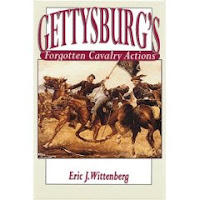
Torn Families: Death And Kinship at the Battle of Gettysburg, Michael A. Dreese, McFarland Publishing, 232 pp. Spring 2007
The Battle of Gettysburg lasted only three days but involved more than 160,000 soldiers-Union and Confederate. Seven thousand died outright on the battlefield; hundreds more later succumbed to their wounds. For each of these soldiers, family members somewhere waited anxiously. Some went to Gettysburg themselves in search of their wounded loved ones. Some were already present as soldiers themselves. In this book are extraordinary-and sometimes heartbreaking-stories of the strength of family ties during the Battle of Gettysburg. Fathers and mothers, siblings and spouses all suffered together, even as they drew strength from one another. Their stories are told here with the help of excerpts from diaries, letters and other correspondence, which provide a first-hand account of the human drama of Gettsyburg on the battlefield and the home front. (Information taken from publisher)
Michael A. Dreese is the author of five books: 'The Hospital on Seminary Ridge at the Battle of Gettysburg' (2002) and 'The 151st Pennsylvania Volunteers at Gettysburg' (2000), 'This Flag Never Goes Down!: 40 Stories of Confederate Battle Flags and Color Bearers at the Battle of Gettysburg' (2004), 'Never Desert the Old Flag!: 50 Stories of Union Battle Flags and Color-Bearers at Gettysburg' (2002) and 'An Imperishable Fame: The Civil War Experience of George Fisher McFarland' (1997).

